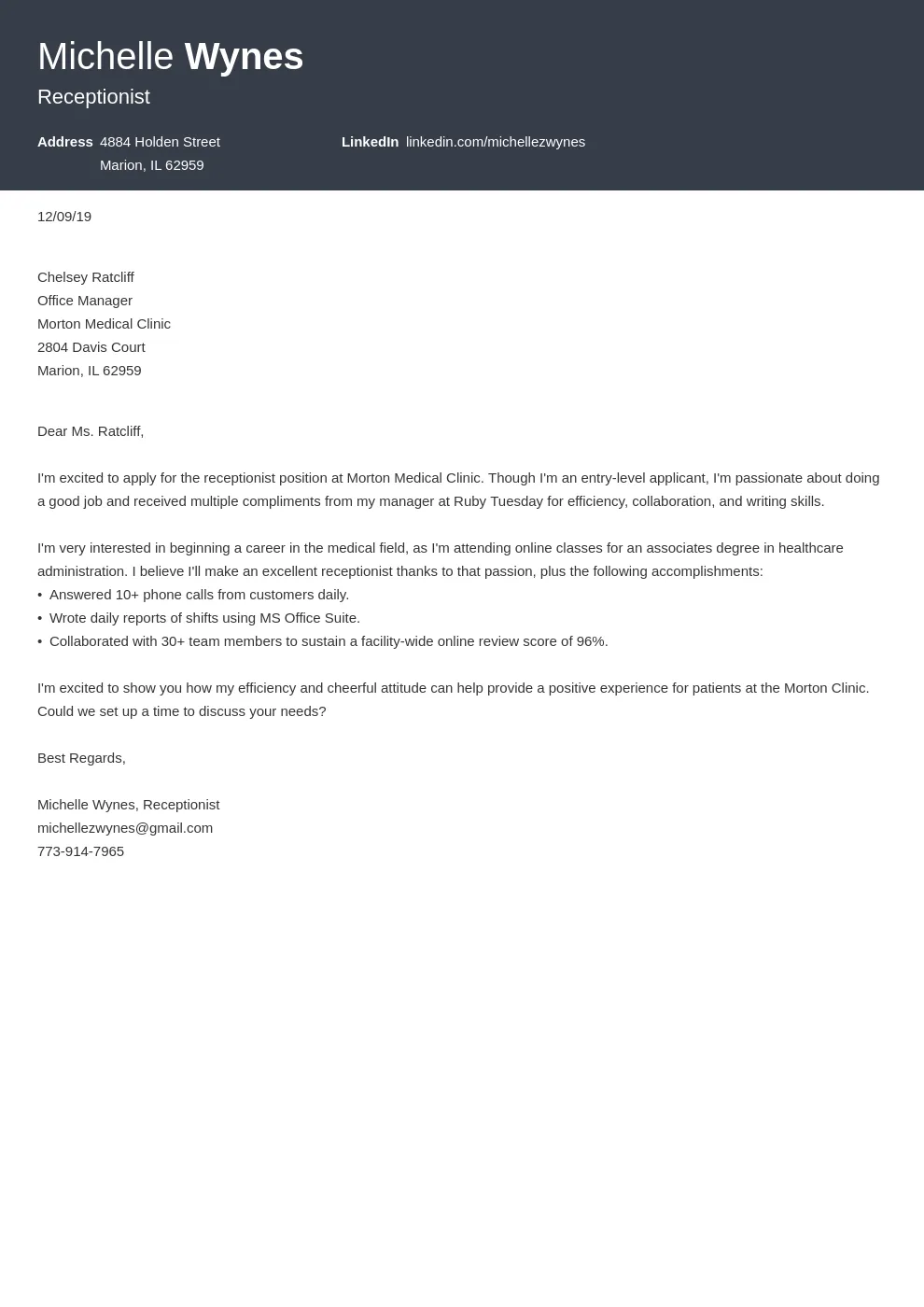Cover Letter: What is it?
A cover letter is your first introduction to a potential employer. It accompanies your resume and provides a concise, compelling summary of your qualifications and aspirations. It’s an opportunity to showcase your personality, express genuine interest in the company, and demonstrate why you’re a good fit for the position. While a resume presents a factual overview of your experience and skills, the cover letter allows you to tell a story, explaining how your unique background aligns with the job requirements. Think of it as a persuasive pitch, designed to encourage the hiring manager to delve deeper into your qualifications and invite you for an interview. Crafting a strong cover letter is crucial, especially when you lack extensive work experience. It helps you to stand out from other candidates.
The Importance of a Cover Letter
Even if a job posting states that a cover letter is optional, it’s always beneficial to include one. The cover letter offers a prime opportunity to showcase your personality and enthusiasm, qualities often missing from a resume. It helps employers see beyond your resume, understanding what you bring to the table. This is especially important when applying for entry-level roles or positions where experience is limited. A well-written cover letter can make a significant difference in getting your application noticed. It allows you to highlight your skills, explain your career goals, and express genuine interest in the company and the specific role. Taking the time to personalize your cover letter demonstrates initiative and a commitment to excellence, both of which can significantly boost your chances of securing an interview. In a competitive job market, a well-crafted cover letter sets you apart.
Key Components of a Cover Letter
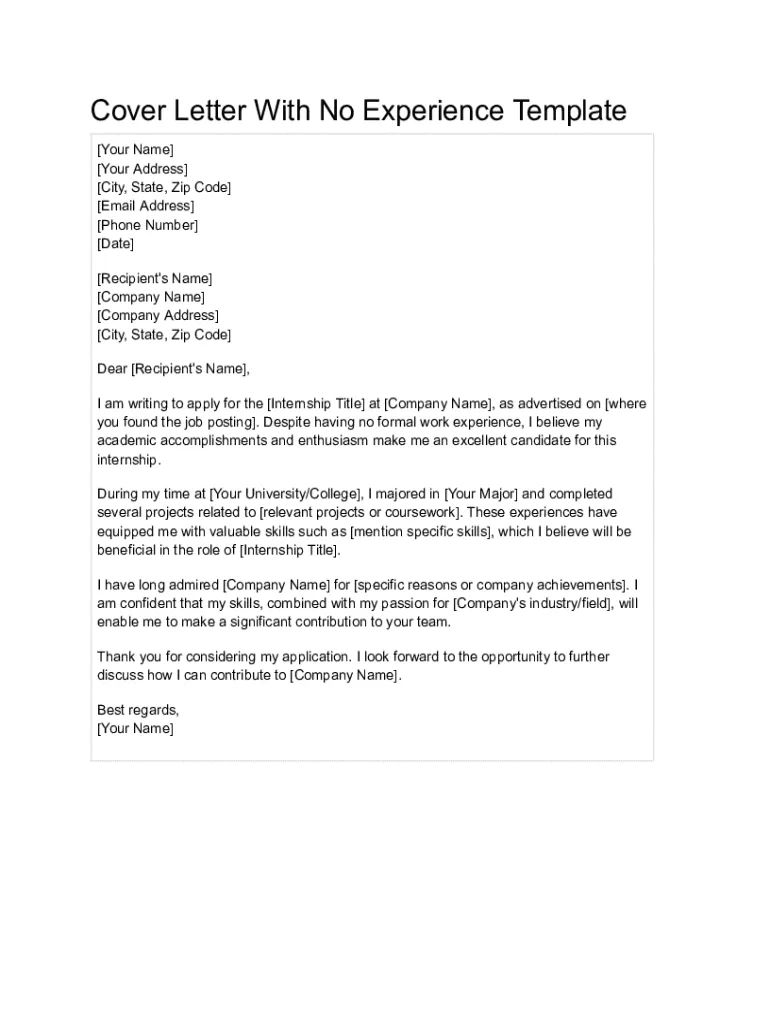
A great cover letter is well-structured, following a clear and concise format. The structure should include your contact information, the recipient’s contact information, a compelling opening, details of skills and achievements, information about education, enthusiasm, addressing employer’s needs, a well-defined closing, proofreading and formatting, with tailored content. Each section plays a vital role in presenting you as a strong candidate. A structured cover letter will help you organize your thoughts and present your qualifications most effectively. By following a well-defined structure, you make it easy for the hiring manager to find the information they need to assess your suitability for the role.
Your Contact Information
Start your cover letter by including your contact information. This typically includes your full name, address, phone number, and email address. Place this information at the top left or right of the page. Use a professional email address and ensure your voicemail greeting is professional. Make sure that the information is current and accurate. This will allow the hiring manager to quickly and easily contact you if they want to invite you for an interview.
The Recipient’s Contact Information
If possible, address your cover letter to a specific person by name. Research the company website, LinkedIn, or other sources to find the hiring manager’s name or the name of the person in charge of hiring for the role. If you can’t find a specific name, you can use a general greeting such as “Dear Hiring Manager.” Always make sure that you have the correct spelling of the name. This personalized approach shows that you’ve taken the time to research the company and the role. Make sure you include the company name, address, and the date.
A Compelling Opening
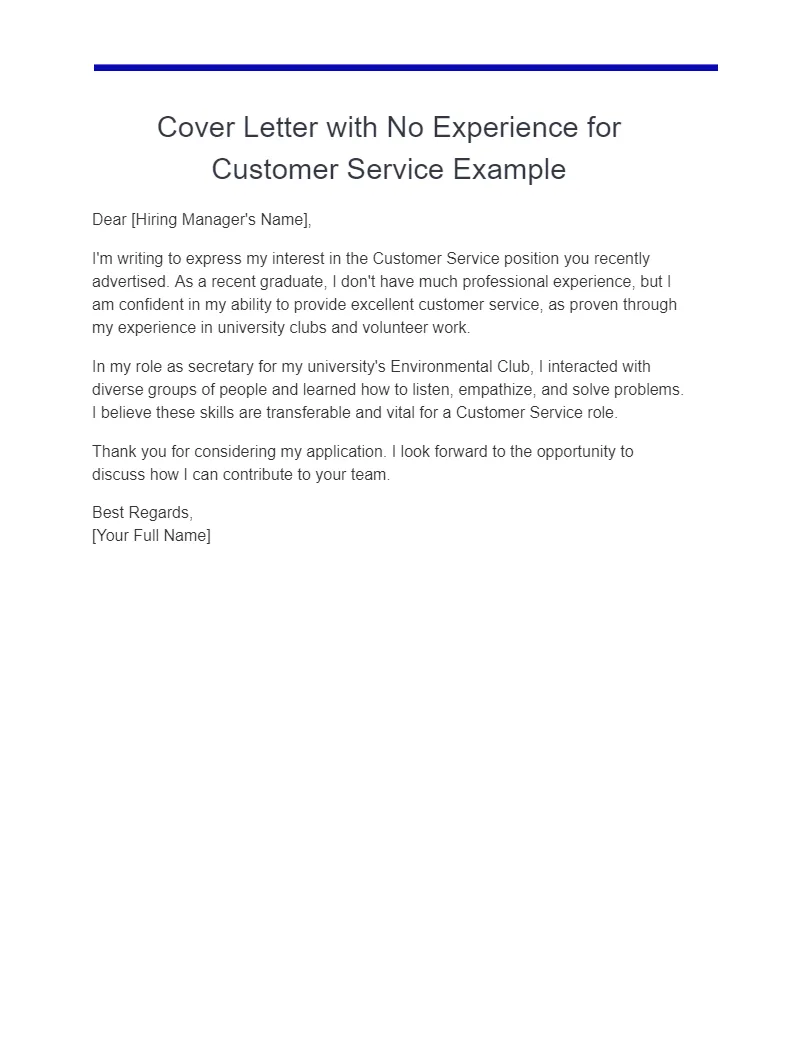
The opening paragraph of your cover letter is your first chance to make a strong impression. It should grab the reader’s attention and make them want to learn more about you. State the specific position you are applying for, and briefly explain how you learned about the opportunity. Clearly articulate your primary skill and your enthusiasm for the role. Express your genuine interest in the company and the position. Make sure the opening is concise, enthusiastic, and tailored to the specific job description. This will set a positive tone for the rest of your letter and encourage the hiring manager to continue reading.
Highlighting Skills and Achievements
Even if you lack professional experience, you can still highlight skills and achievements. Focus on transferable skills you’ve gained through volunteer work, academic projects, extracurricular activities, or personal projects. Provide specific examples that demonstrate your abilities. This could include leadership roles, problem-solving skills, teamwork, or communication skills. Quantify your achievements whenever possible. For example, “Managed a team of five volunteers, resulting in a 20% increase in event participation.” Use action verbs to describe your accomplishments and create a vivid picture of your capabilities. Always align your skills and achievements with the requirements of the job description.
Focusing on Transferable Skills
Transferable skills are skills you’ve developed in one situation that can be applied in another. Identify these skills from your previous experiences, such as communication, time management, problem-solving, and teamwork. Explain how these skills relate to the job requirements. For example, if the job requires strong organizational skills, and you organized events in your academic life, describe how. Provide examples that highlight how you’ve used these skills to achieve positive results. This helps the hiring manager understand how your skills can benefit their company, even without direct work experience. By highlighting these transferable skills, you can effectively show your potential and suitability for the role.
Showcase your education
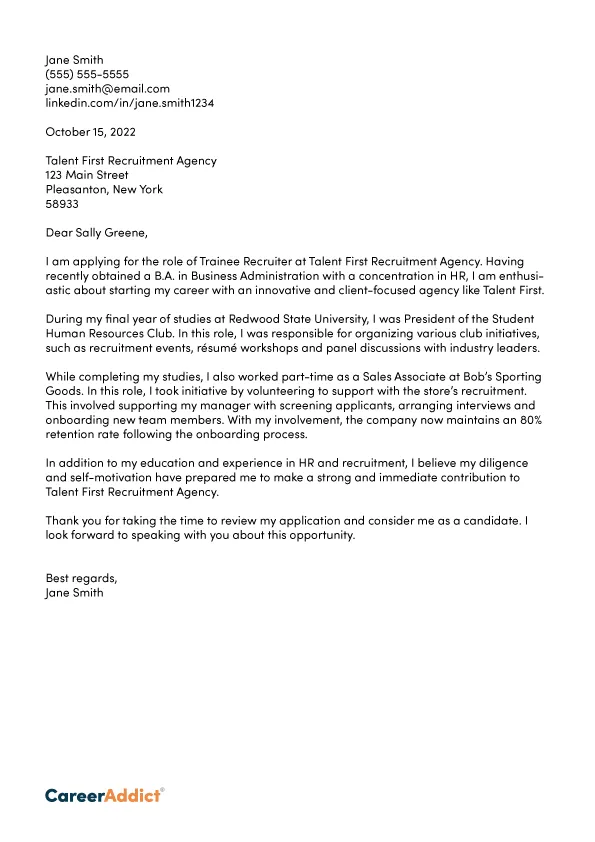
If you have limited work experience, your education can be a significant asset. Highlight relevant coursework, academic achievements, and any projects or research you’ve completed. Mention any honors, awards, or special recognitions you’ve received. Include your GPA if it’s above average and relevant to the role. You can also discuss any skills you gained through your education, such as critical thinking, research, or writing skills. Emphasize how your education has prepared you for the job. Mention any extracurricular activities or clubs you participated in, especially if they demonstrate leadership, teamwork, or other relevant skills. This helps demonstrate your commitment to learning and your ability to apply theoretical knowledge in a practical setting.
Emphasizing your enthusiasm
Enthusiasm is a key attribute that employers seek in potential employees. Express your genuine excitement for the role and the company. Explain why you’re interested in this specific position and what motivates you. Show that you have researched the company and understand their values and mission. Demonstrate how your skills and interests align with the company’s goals. Be specific about what you hope to achieve in the role. A clear demonstration of your enthusiasm shows that you are motivated and passionate about the opportunity. Share any personal experiences or anecdotes that support your enthusiasm, creating a connection with the hiring manager.
Addressing the Employer’s Needs
Carefully review the job description and tailor your cover letter to address the employer’s specific needs. Identify the key requirements and qualifications they’re looking for. Highlight how your skills, experiences, and education align with these requirements. Use keywords from the job description throughout your cover letter. Show how you can solve the company’s problems or contribute to its goals. Make sure your letter shows that you understand the company’s business and what they are trying to achieve. Explain what value you can bring to the company and how your skills can contribute to its success. This demonstrates that you’ve carefully considered the role and that you’re a good fit for their needs.
Closing the Cover Letter
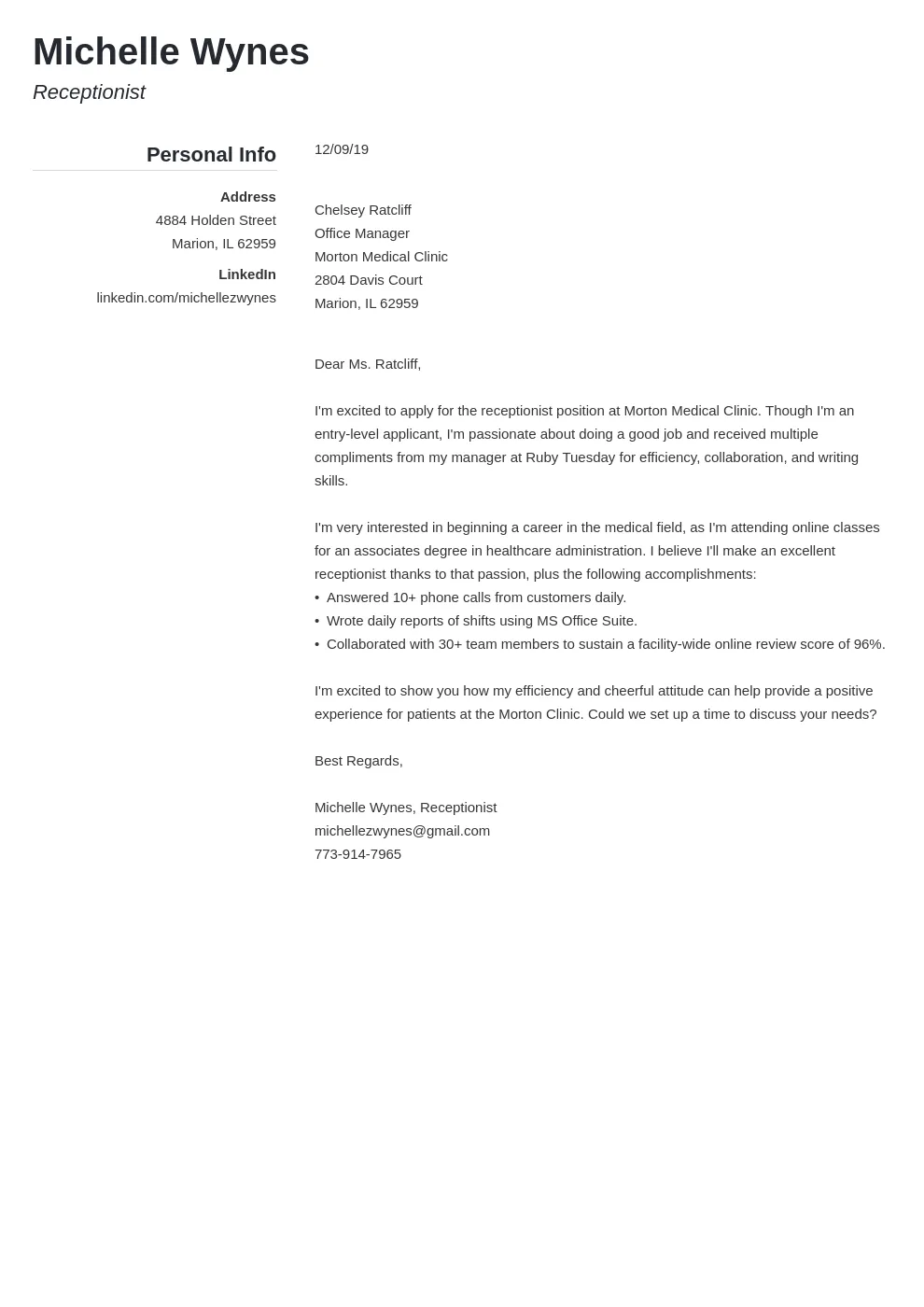
Your closing paragraph should reiterate your interest in the position and thank the hiring manager for their time and consideration. Reiterate your enthusiasm for the opportunity and your eagerness to learn more about the role. Include a call to action, such as requesting an interview or offering to provide more information. End with a professional closing, such as “Sincerely” or “Respectfully,” followed by your full name. Proofread the closing carefully to ensure it aligns with the tone of your cover letter and reflects your professionalism. A strong closing leaves a lasting positive impression and encourages the hiring manager to take the next step.
Proofreading Your Cover Letter
Before submitting your cover letter, proofread it carefully to check for any errors in grammar, spelling, and punctuation. Errors can create a negative impression and undermine your credibility. Read your cover letter aloud to catch any awkward phrasing or sentence structures. Have a friend, family member, or career counselor review your cover letter for feedback. Ensure your cover letter is free of any typos or inconsistencies. Proofread your cover letter multiple times to ensure accuracy. Proofreading will make a good impression and that you value attention to detail, which is important to potential employers.
Formatting and Design
Choose a professional and easy-to-read font, such as Times New Roman, Arial, or Calibri, and use a font size between 10 and 12 points. Use single spacing and leave a space between each paragraph. Ensure that your cover letter is easy to read and visually appealing. Use a consistent format throughout the document. Be sure to keep your cover letter to one page, as employers often have limited time to review applications. Make sure the layout is clean and well-organized. If you’re submitting your cover letter electronically, save it as a PDF file to preserve the formatting and make it accessible to the employer.
Tailoring Your Cover Letter
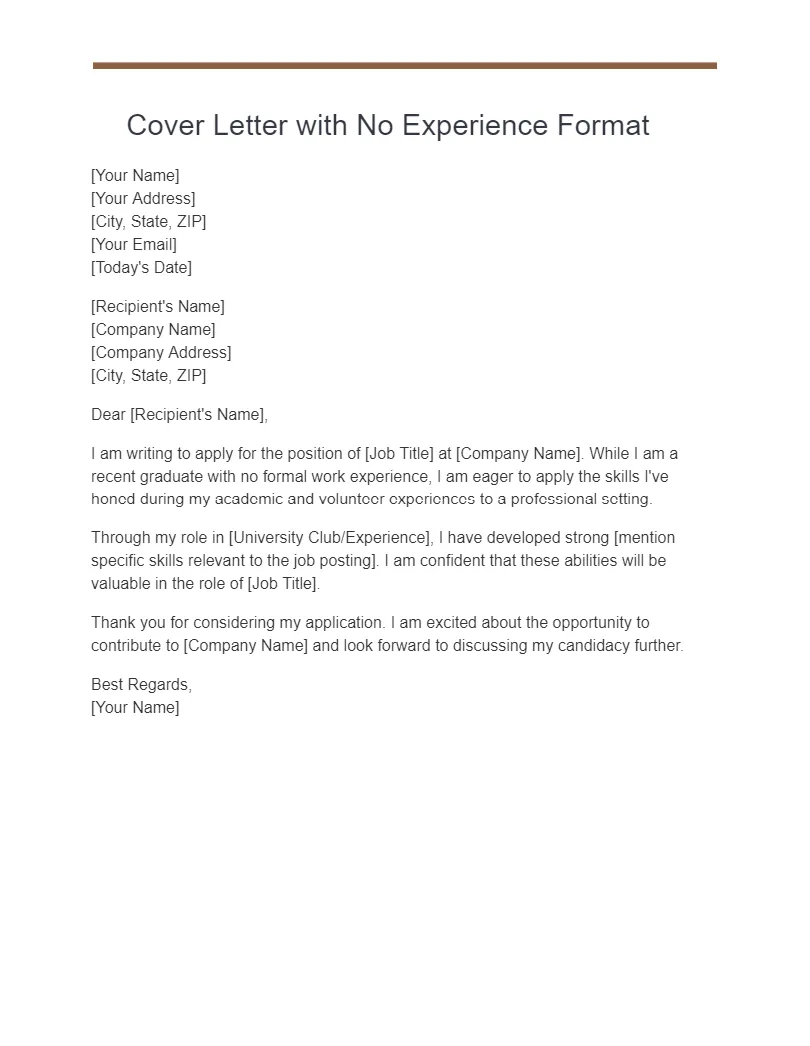
Customize your cover letter for each job application. Don’t use a generic template. Research each company and role to understand their specific needs and expectations. Use keywords from the job description to demonstrate that you understand the requirements. Highlight the specific skills and experiences that are most relevant to the position. Tailoring your cover letter shows that you have taken the time to understand the company and that you’re a good fit for the role. Making your cover letter relevant to the job you are applying for helps you to demonstrate the relevance of your skills and qualifications.
Cover Letter: Final Thoughts
A well-written cover letter is an essential tool for anyone looking for a job, especially those with limited work experience. The cover letter should be clear, concise, and tailored to each job application. By following the guidelines, you can write a cover letter that highlights your strengths, addresses the employer’s needs, and increases your chances of getting an interview. Focus on transferable skills, emphasize your education, and express your enthusiasm. Always proofread your cover letter and tailor it to the specific job. Your cover letter is your chance to make a strong first impression, so make it count.
